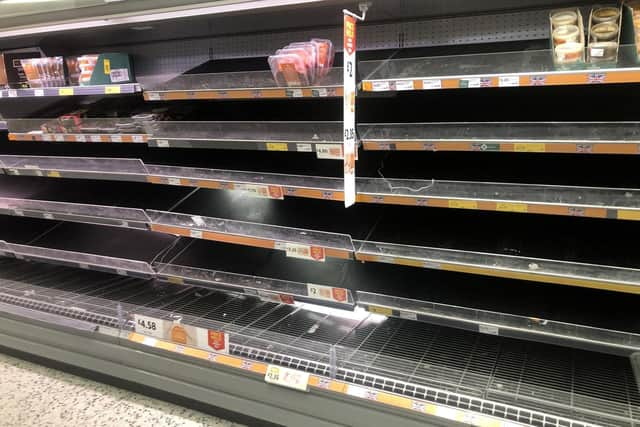Let's use the power of local networks to update supply chains - Dr Kamran Mahroof
We rely on them for everything from toilet paper to micro-chips, and from crisps to cooking oil. Recent events have shown us how vulnerable supply chains are.
Global supply chains seem to be between a rock and a hard place, driven aggressively by cost efficiencies and built on lean principles, the focus is largely on keeping costs low across all parts of the supply chain, be it through optimising space, minimising waste, hiring fewer staff and holding less inventory.
Advertisement
Hide AdAdvertisement
Hide AdAll of this is great, until a black-swan event, i.e. a low-probability and high impact situation occurs (and we’ve had many of late), where you suddenly find your supply chains are “too lean” and unable to respond, as a surge in customer demand (fuelled by panic buying and stockpiling) can happen very quickly, while it takes a lot longer for the supply network to react and meet that demand, especially if it is geographically dispersed.


Brexit, the pandemic, and the conflict in Ukraine have brought all these issues into the spotlight. While we are exposed to the shortcomings and weaknesses of our supply networks, simply making piñatas out of supply chains for all the problems we face isn’t fair either. Supply chains are there to serve a purpose and while they do naturally have “bounce-back abilities”, they were never designed to be put through so much trauma. It’s akin to a patient being discharged following a near-fatal accident, only to be involved in another accident on the way home – recovery will undoubtedly be uncertain and at best, slow.
Access to cheaper materials and cost-effective labour supply has geographically expanded our supply networks, often at the expense of resilience, flexibility, and the ability to respond fairly quickly to disruptions. Hence, we must find new ways to operate in a post-Covid, post-Brexit and globally fragile environment.
Firstly, there is a need to undertake a comprehensive mapping exercise of existing supply networks, to better understand what it offers and what it doesn’t.
Advertisement
Hide AdAdvertisement
Hide AdDo we have substitutes closer to our shores? Local substitutes are likely to be more expensive (to begin with) but probably have more availability, are easier to manage, therefore making it a better option than having no suppliers at all.
Secondly, is it worth considering shifting from just-in-time (JIT) to a just-in-case (JIC) model? JIT is still relevant, but we must acknowledge the nature of recent disruptions faced and how this approach limits inventory and reduces the ability to respond to surges. JIC can offer much needed resilience, in terms of greater stockpiles, responsiveness and flexibility during times of uncertainty.
Thirdly, thinking global but acting local – in doing so, we would remove dependency on geographically dispersed suppliers and build capacity at home, exploring more intra-regional collaborative opportunities.
The pandemic, albeit by force not choice, has shifted mindsets and encouraged eco-activism, local sourcing, and even manufacturing closer to home. Localisation, or ‘reshoring’, helps, offering flexibility to changing demands, while protecting organisations from the external shocks.
Advertisement
Hide AdAdvertisement
Hide AdThe idea is to simply move away from sole dependency abroad to having capacity at home, thereby spreading the risk and providing more options. This move from international to ‘intra-regional’, involves local cooperation and can help reduce transaction costs, whilst still promoting economies of scale.
While shifting from global to local is a step in the right direction to counter logistics challenges, it also offers protection from global price volatility and gives us a real shot at achieving our carbon footprint pledges.
That doesn’t mean globalisation is now a thing of the past. Committing to local may seem an appropriate and sensible approach for now but stocking up on inventory and increasing capacity is costly and carries its own risks.
Moreover, resources and skill shortages as well as the economic impact of Covid, means organisations will be reluctant to forsake global growth opportunities and cheaper labour markets, which is why a supply network mapping exercise is essential.
Advertisement
Hide AdAdvertisement
Hide AdFinally, we must now digitise our supply chains so we can better forecast disruptions. Only so much planning can take place. We should invest more effort in repositioning and revaluating their configuration by embracing the untapped power of local networks.
Dr Kamran Mahroof is an assistant professor at the University of Bradford, School of Management.
